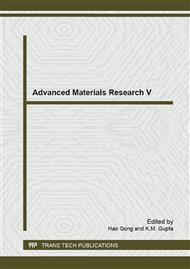p.220
p.225
p.231
p.237
p.245
p.253
p.259
p.264
p.269
Numerical Modelling of the Interaction Macro–Multimicrocracks in a Pipe under Tensile Stress
Abstract:
In this paper, the evaluation of the SIFof a macrocrack in interaction with one or several microcracks in a material containing a geometrical defect was investigated. Several configurations were considered in order to apprehend the mechanisms induced by the interaction effect and in particular the effects of reduction and/or amplification of the stress field between macro and single or multiple microcracks. The obtained results show that, macro–microcrack spacing is an important parameter if the microscopic crack is relatively close to the macrocrack-tip. The macrocrack has the tendency to accelerate as it propagates towards the microcrack. When the relative distance characterizing this spacing is higher than 0.3, the interaction effect can be neglected and the SIF remains unchanged for both defect types. When this ratio is lower than 0.3, the interaction between the two defects becomes significant and the stress intensity factor at the macrocrack tip strongly increases.
Info:
Periodical:
Pages:
245-250
Citation:
Online since:
May 2015
Price:
Сopyright:
© 2015 Trans Tech Publications Ltd. All Rights Reserved
Share:
Citation:


